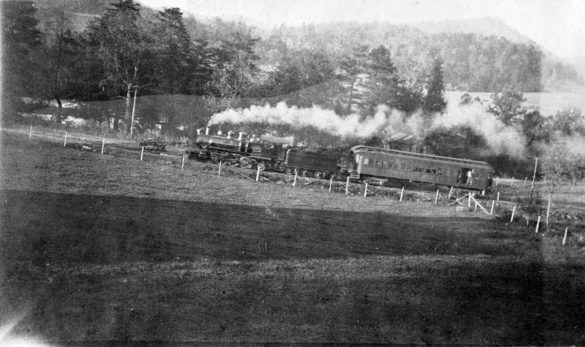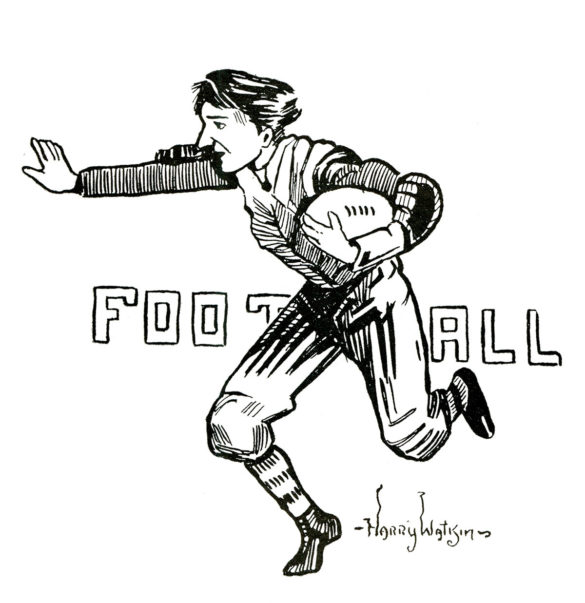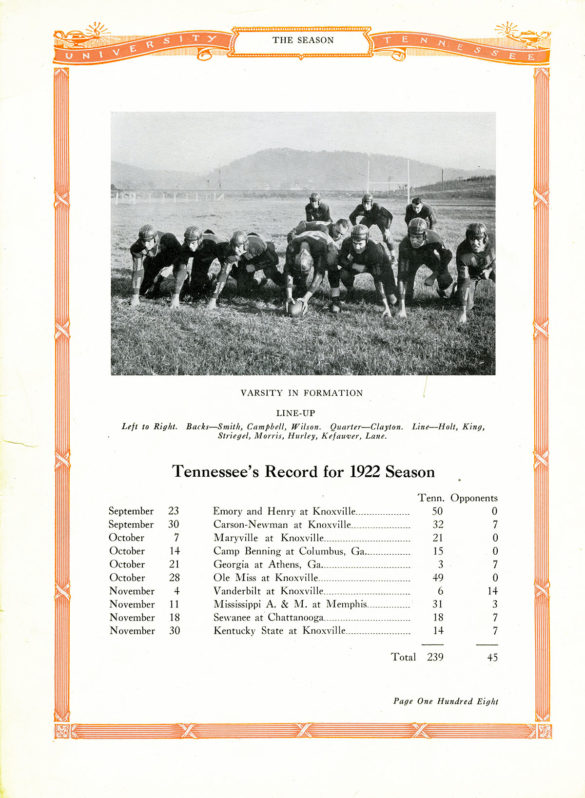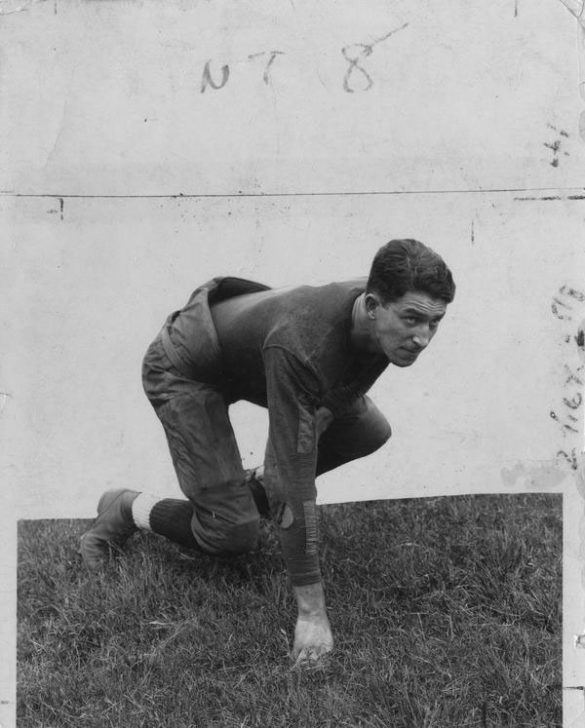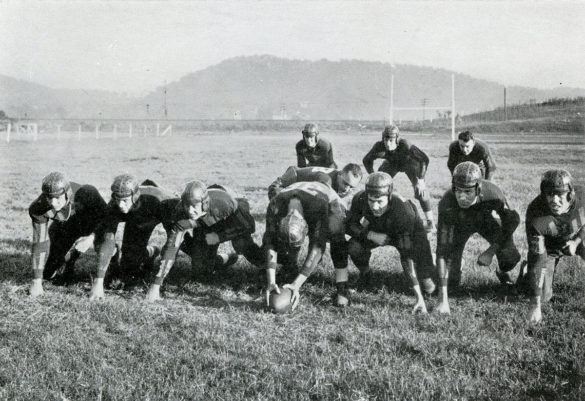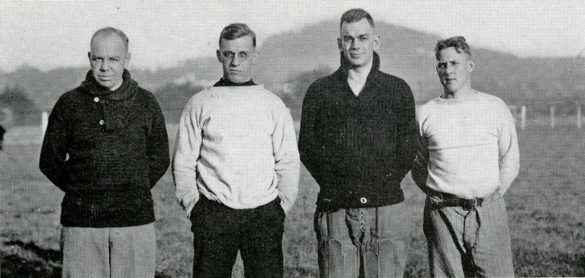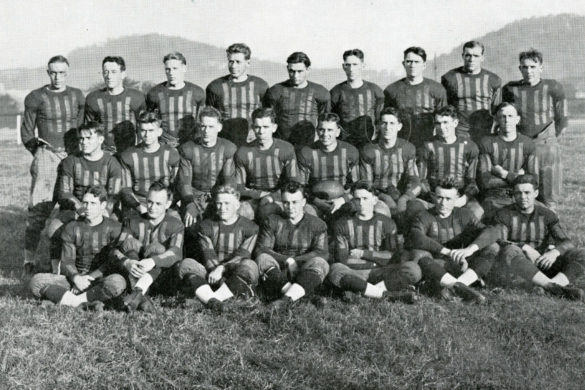On the morning of September 10, 1922, a noticeable group of athletic young men milled about the platform of Knoxville’s Southern Railway station waiting to board a train that would take them to Walland. With the 1922 football season set to begin in two weeks, these University of Tennessee Vols were traveling to the Great Smoky Mountains for a week of off-campus preseason practice before the opening game with Emory and Henry on September 23.
At Walland, the team transferred to a logging train operated by the Little River Lumber Company before continuing the journey up the Left Prong of the Little River to Elkmont where they encamped at the Wonderland Hotel, a rustic facility that stood above the Elkmont train station. According to a report in the Nashville Tennessean, the retreat in Elkmont, known affectionately as Camp Wonderland, had been chosen as the lair for the Fighting Volunteers’ preseason practice because of extensive repairs being made to the university gymnasium.
Once a small remote mountain community along the upper reaches of Little River, Elkmont had been transformed by the Little River Lumber Company into a large logging camp with its own railway station. Where the logging operation had cleared the forests around Elkmont, Knoxvillians had acquired lots from the lumber company and built summer cabins along the river. The lumber company had also deeded a large tract of property below the logging camp to Charles Carter under the condition that a hotel would be built adjacent to the rail line. The Wonderland Park Hotel opened to the public in 1915.
The UT student newspaper, the Orange and White, records that some 30 or 40 Vol warriors under the supervision of Coaches Banks, Hobt, and Lowe were placed on a training schedule designed to toughen muscles by means of special exercises. The regular routine of scrimmages interwoven with turns at the tackling dummy and blocking sled were augmented with daily regimens of swimming and hiking. The squad enjoyed three swims a day in a deep pool in nearby Little River. The first was scheduled for six o’clock in the morning. As one observer reported to the Tennessee Farmer, a publication of the UT College of Agriculture, “a plunge in and a quicker plunge out was the order because the pool felt as if the north pole had settled about it during the night.” Hikes into the mountains came in for their turn and were enjoyed immensely by the squad if only because they found the scenery in the Smokies to be “far better than wonderful.”
The Orange and White also reported, “besides several rounds at the ‘stuffed imagination’ and blackboard lectures, light scrimmage was engaged in so that the Coaches could get a better line on their prospective players for the season.” Unfortunately, on the second day of practice Jimmy Smith, the fleet-footed quarterback from the previous season, and Bill Hatcher, a veteran of the scrubs, both injured shoulders during a scrimmage, necessitating their return to Knoxville on Wednesday, three days before Coach Banks planned to close practice at Camp Wonderland and return to Shields–Watkins Field.
A less serious injury was sustained by veteran lineman Estes Kefauver. In a 1950 letter to Knoxville News Sentinel sports editor Tom Siler, Jake Nicholson remarked that “Kefauver’s schnozzle, skinned in the first scrimmage of the season,” did not heal until spring. Though a scrub among the Vols 11, Kefauver would later go on to become a US senator from Tennessee and would twice seek the Democratic Party’s nomination for president.
“Early to bed and early to rise” was the order of the day since there were no outside distractions other than the moon and the mountain peaks above. During practice, the squad perspired greatly under the boiling September sun, losing weight by the wholesale. To replenish their reserves, “the men were served with the best of the proper kind of food for those in training for a season of serious, hard and fast football.” Furthermore, as the Tennessee Farmer reported, “the cool mountain streams and the cool nights served to put ‘pep’ into the tired bodies and renewed the fight and vigor of the entire squad.”
On the morning of the 16th, the Vols’ sojourn in the Smokies came to a close. The entire squad boarded the logging train, returning to Knoxville by nightfall. Back on campus, the squad learned that they would be stepping out onto the field the next Saturday in new uniforms. The “newest” feature of the uniforms was to be orange jerseys manufactured by O’Shea Knitting Mills of Chicago and bearing numbers on the fronts and backs. Since the 1916 season, the custom had been for the Vols 11 to wear black jerseys with small orange stripes to show the school’s color. The return to the orange jerseys was speculated to be easier on the eyes of the game’s fans and a joy to the old-timers who loved the traditional colors.
1.
Oh! Wonderland we love you,
There at old Smoky’s feet;
With mountains tall and stately,
That guard our heroes sleep.
2.
In your soothing care so tender,
We have placed old U. T.’s best;
And to you will go the honor,
When our boys have stood the test.
—A. H. J.
This paean to Camp Wonderland was
published in the Orange and White.
Sources:
Nashville Tennessean (September 10, 1922)
Orange and White (September 18, 1922)
Tennessee Farmer (November 1922)
Tennessee Farmer (February 1923)
Letter from Jake Nicholson to Tom Siler. Tom Siler Papers, Special Collections, University of Tennessee Libraries.
Story and photos courtesy of University of Tennessee Libraries


